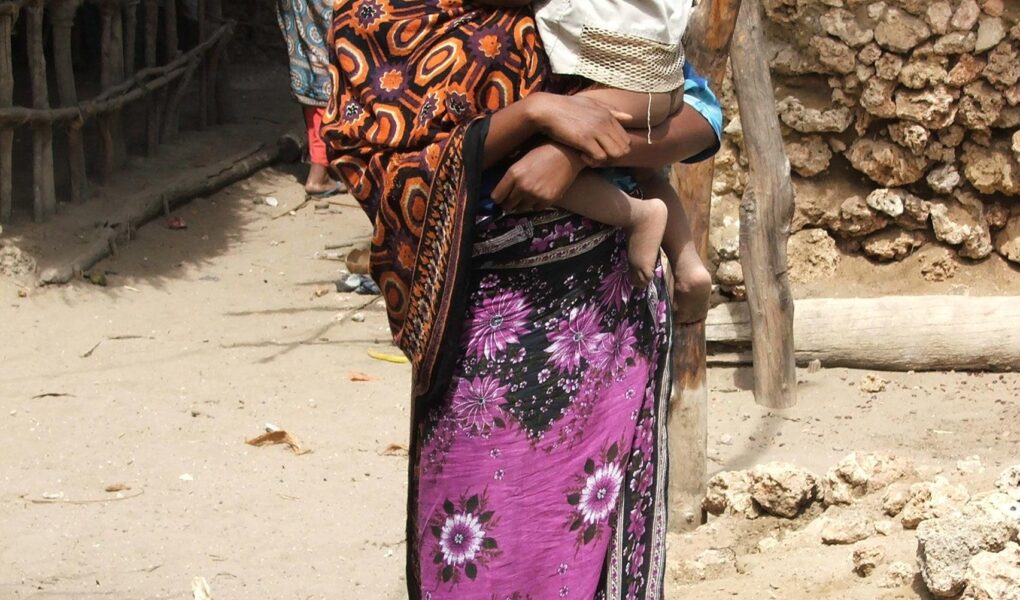Exploring the Rich Tapestry of Traditional African Clothing for Women
Across the vast and diverse continent of Africa, clothing serves as more than mere fabric; it is a vibrant expression of identity, culture, and heritage. Traditional African clothing for women stands as a testament to centuries of history, artistry, and communal values, woven together in colorful fabrics and intricate patterns. Each stitch tells a story—of tribal origins, ceremonial significance, and regional customs—reflecting the wearer’s personal journey and cultural roots. From the striking kente cloth of Ghana to the elegant batik designs of West Africa, this article delves into the enchanting world of women’s traditional attire, celebrating the richness and diversity of styles that not only adorn but also empower. Join us as we uncover the aesthetic beauty and profound meanings behind these timeless garments that continue to resonate in contemporary society.
Table of Contents
- The Rich Tapestry of Traditional African Attire for Women
- Exploring Regional Variations: A Journey Through Fabric and Design
- Cultural Significance: Understanding the Stories Woven into Garments
- Modern Adaptations: Embracing Tradition with a Contemporary Twist
- Q&A
- In Conclusion
The Rich Tapestry of Traditional African Attire for Women
Traditional African attire for women is a splendid showcase of cultural diversity and artistic expression. Each piece often tells a story, drawing from the rich heritage of the different ethnic groups across the continent. Bright colors, intricate patterns, and exquisite embroidery are hallmarks of these garments, making them not only clothing but also a celebration of identity. Some popular styles include:
- Boubou: A flowing robe worn in West Africa, often paired with matching trousers.
- Kanga: A colorful rectangular piece of cotton fabric worn around the waist, adorned with Swahili proverbs.
- Kente cloth: Originating from Ghana, this handwoven textile is praised for its vibrant colors and complex designs.
In addition to the visual splendor, traditional attire is often accompanied by accessories that enhance the overall look. Jewelry made from beads, metals, and shells adds a layer of elegance, while head wraps and turbans signify status and beauty within various cultures. The significance of these garments transcends mere fashion; they play a pivotal role in cultural ceremonies, weddings, and important life events. The intersection of tradition and modernity has also led to a fusion of styles, allowing women to embrace both heritage and contemporary fashion trends.
Exploring Regional Variations: A Journey Through Fabric and Design
Across the vast expanse of Africa, the artistry of traditional female clothing embodies the rich cultural narratives of diverse regions. From the vibrant kente cloth of Ghana to the delicate patterns of anzar worn by women in Ethiopia, each garment tells a story steeped in history and symbolism. Women often wear these traditional pieces during significant events such as weddings, religious ceremonies, and festivals, showcasing intricate designs that are passed down through generations.
In addition to aesthetics, these garments also serve practical purposes, adapting to the varying climates and lifestyles across the continent. The use of resources such as cotton, silk, and natural dyes varies from one region to another, influencing not only the texture but also the color palettes of each fabric. Here are some key elements found in various regions’ attire:
- Kente Cloth: A striking fabric from the Akan people, known for its bold colors and geometric designs.
- Batik: A wax-resist dyeing technique prevalent in West Africa, resulting in vibrant and unique patterns.
- Shweshwe: A printed cotton fabric from South Africa, typically used for traditional dresses and garments.
- Adire: Indigo-dyed cloth from Nigeria, celebrated for its indigo hues and elaborate motifs.
Cultural Significance: Understanding the Stories Woven into Garments
Traditional African clothing for women is not merely a matter of fashion; it encapsulates a rich tapestry of cultural heritage, social status, and individual identity. Each garment tells a unique story, often symbolizing the wearer’s ethnic background, marital status, and even their aspirations. The patterns, colors, and techniques used in these textiles can vary widely across regions, with each design embodying profound meanings and traditions:
- Kente cloth from Ghana signifies wealth and spirituality.
- Adire cloth from Nigeria showcases the artistry of indigo dyeing.
- Shuka fabric among the Maasai is a symbol of pride and community.
- Batik prints feature vibrant colors and intricate designs that capture folklore.
Furthermore, these garments often play a pivotal role in significant rites of passage and ceremonies. Young women might wear specific attire during coming-of-age rituals, while married women adorn themselves in elaborate dresses for celebrations. The choice of fabric and embellishment often serves as a medium for storytelling, reflecting themes such as love, resilience, and kinship:
| Garment | Symbolism |
|---|---|
| Kanga | Women’s empowerment and strength |
| Isiagu | Royalty and status within the Igbo tribe |
| Toga | Elegance and fashionability among urban communities |
Modern Adaptations: Embracing Tradition with a Contemporary Twist
In recent years, traditional African clothing for women has undergone a remarkable transformation, effortlessly integrating modern elements while paying homage to rich heritage. Contemporary designers are experimenting with various fabrics, vibrant prints, and innovative silhouettes that appeal to a global audience. These modern adaptations often feature asymmetrical cuts, bold color palettes, and mixed patterns, which breathe new life into classic designs. By embracing traditional techniques such as beading, embroidery, and tie-dye, artisans are crafting pieces that resonate with younger generations, ensuring that cultural narratives are not only preserved but celebrated in fresh, dynamic ways.
The revival of traditional clothing extends beyond mere aesthetics; it embodies a deeper cultural narrative and connection. Many fashion shows and festivals now showcase a blend of traditional garments with contemporary influences, helping to elevate local craftsmanship on a global stage. This fusion is evident in:
- Kimonos: Incorporating vibrant African prints with modern silhouettes.
- Trousers: Combining tailored lines with traditional motifs for versatile streetwear.
- Dresses: Using traditional fabrics in contemporary styles for versatile events.
Such innovative styles not only celebrate and promote African culture but also foster a sense of identity among women who wish to embrace their roots while navigating the modern world. As this trend continues, it’s clear that traditional African clothing will thrive in the landscape of contemporary fashion, continuously evolving to reflect the voices of a new generation.
Q&A
Q&A: Exploring Traditional African Clothing for Women
Q: What constitutes traditional African clothing for women?
A: Traditional African clothing for women varies significantly by region, culture, and tribe, but generally features vibrant fabrics, intricate designs, and specific garments that carry cultural significance. Common pieces include the Kanga, anexample from East Africa, and the Dashiki, popular in West Africa. Fabrics often showcase bold colors and patterns that reflect local heritage.
Q: Can you describe some key garments worn by women in different African cultures?
A: Absolutely! In West Africa, the Boubou is a flowing robe that symbolizes elegance and tradition, often worn during special occasions. The Kente cloth, originating from Ghana, is another significant garment known for its colorful patterns. In Southern Africa, the Xhosa women are recognized for their traditional beaded necklaces and capes, which vary in styling and color to indicate social status and age.
Q: How do patterns and colors in traditional African clothing convey meaning?
A: Patterns and colors in traditional African attire serve as symbols of identity, status, and community. For example, certain colors may signify mourning, while others celebrate joy and prosperity. Patterns often tell stories or represent historical events, cultural beliefs, or spiritual connections, making each garment rich with meaning.
Q: Are there any modern adaptations of traditional African clothing?
A: Yes, modern adaptations of traditional African clothing are becoming increasingly popular. Fashion designers are infusing traditional styles with contemporary elements, creating hybrid garments that appeal to both young and older generations. This blend allows women to honor their heritage while embracing global fashion trends, fostering a unique style that resonates today.
Q: How important is it for young African women to wear traditional clothing?
A: Wearing traditional clothing can play a crucial role in fostering a sense of identity and connection to one’s heritage. For many young African women, embracing traditional attire instills pride and reminds them of their cultural roots. It also serves as a form of resistance against globalization, showcasing the beauty and diversity of African cultures on a global stage.
Q: Where can one find authentic traditional African clothing?
A: Authentic traditional African clothing can often be found at local markets, specialty boutiques, and cultural festivals across the continent. Online platforms also support artisans who create traditional garments, offering a wide range of choices. When shopping, it’s essential to seek out reputable sellers to ensure that the pieces are not only authentic but also ethically sourced.
Q: Is it appropriate for non-Africans to wear traditional African clothing?
A: While the appreciation of traditional African clothing is welcome, sensitivity to cultural significance is paramount. Non-Africans should approach the subject with respect and understanding, recognizing that certain garments might hold deep meanings tied to specific cultural contexts. If in doubt, consider supporting African designers and wearing pieces that celebrate the culture without appropriating it.
Q: How does traditional African clothing contribute to cultural preservation?
A: Traditional African clothing acts as a living expression of culture. By continuing to create, wear, and celebrate these garments, communities foster an appreciation for their history and identity. This cultural practice not only preserves artisan techniques and textile craft but also educates future generations about their rich heritage, ensuring that traditions endure in an evolving world.
In Conclusion
In a world that increasingly embraces the beauty of cultural diversity, traditional African clothing for women stands as a vibrant testament to history, identity, and artistry. Each piece, woven with not just fabric but rich stories and heritage, reflects a deep connection to the land and its ancestors. As we celebrate these garments, we recognize them not merely as attire but as a means of expression that transcends generations. Whether worn during festive occasions or in the everyday, traditional African clothing resonates with the essence of femininity and empowerment. By exploring and honoring these traditions, we contribute to a broader understanding of culture, fostering appreciation for the unique narratives that every stitch and pattern tells. Let us continue to champion the intricate craftsmanship and profound symbolism embedded within these beautiful garments, ensuring that they continue to inspire not only the wearers but also all who appreciate the rich tapestry of human experience.



